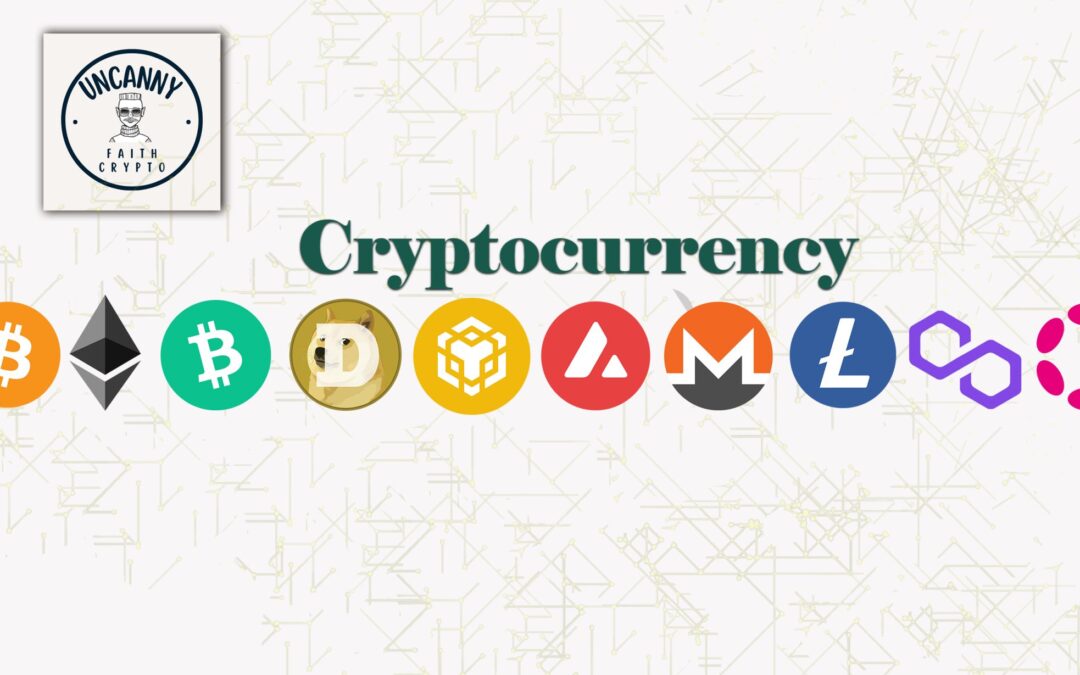The cryptocurrency landscape is undergoing a seismic shift, and with technological advances coming thick and fast, one buzzword on everyone’s lips is LayerZero. With blockchain innovation moving far beyond where it started over a decade ago, LayerZero is shaping up to be one of the most significant developments in cryptocurrency. But what exactly is LayerZero, and what does it mean for the future of crypto? In this in-depth article, we’ll break down LayerZero’s role in blockchain ecosystems, explore the trends expected to dominate 2025, and provide actionable insights for anyone invested in the future of digital finance.
What is LayerZero? Breaking Down the Basics
Before delving into trends and predictions, let’s first understand LayerZero. At its core, LayerZero is an omnichain interoperability protocol. While that might sound technical, the premise is simple: LayerZero enables seamless communication between distinct blockchain networks. Currently, blockchain ecosystems (e.g., Ethereum, Binance Smart Chain, Solana) often operate in silos, with minimal ability to interact. This lack of interoperability restricts functionality and scalability.
With LayerZero, decentralised applications (dApps) gain the ability to operate across multiple chains, leveraging the benefits of each ecosystem while maintaining seamless integration. For example, a decentralised finance (DeFi) application could use Ethereum for its robust security layer while transacting on Binance Smart Chain for its lower fees. This innovation isn’t just exciting—it’s transformative and positions LayerZero as critical infrastructure for the future of Web3.
Why Does LayerZero Matter?
LayerZero addresses one of blockchain’s most significant pain points: interoperability. Enhancing cross-chain connectivity opens the door to innovation and user scalability like never before. Think of it as the "Internet of Blockchains," where diverse networks communicate fluently for the first time—a game-changer for developers and users alike. As blockchain adoption grows across industries, from logistics to gaming and finance, needing unified systems across multiple ecosystems will only intensify. LayerZero offers the solution by acting as the connective tissue binding these chains together.
Why LayerZero is Pivotal to the Future of Cryptocurrency
The potential use cases for LayerZero span nearly every facet of blockchain technology. Whether you’re a casual crypto enthusiast, a developer, or an enterprise considering blockchain adoption, LayerZero’s advancements could play a role in transforming how cryptocurrencies are used. Beyond interoperability, let’s break down why LayerZero will be pivotal by 2025:
1. DeFi Becoming Multi-Chain
Decentralised finance exploded in popularity in 2020 and 2021. However, it lacked cohesion due to fragmentations between ecosystems. LayerZero bridges these divides, enabling DeFi platforms to operate seamlessly across chains. This could drastically reduce transaction costs for users and create an interconnected financial marketplace.
Imagine transferring assets or liquidity between Ethereum and Avalanche in mere seconds without relying on centralised exchanges (CEXs). LayerZero’s solution eliminates the friction, bringing multi-chain DeFi to reality.
2. Elimination of Bridging Risks
Interoperability today heavily depends on bridging solutions, which often come with security compromises. Bridges, notorious for vulnerabilities, have been linked to hacks totalling billions of dollars. LayerZero bypasses these intermediaries by creating a protocol that eliminates the need for traditional bridges. This innovation makes transfers faster and more secure, addressing one of crypto’s long-standing issues.
3. Seamless dApp Interactions
As decentralised applications evolve, many will require resources that span multiple blockchains. For instance, a gaming platform could use Ethereum’s robust mainnet for in-game asset creation while simultaneously employing Solana’s speed for real-time gameplay. LayerZero equips developers to build applications that efficiently access these cross-chain capabilities.
Key Trends Shaping Cryptocurrency by 2025
As we look ahead to 2025, LayerZero will likely play a crucial role in defining the crypto space. However, it isn’t operating in isolation. LayerZero intersects with broader trends that will influence cryptocurrency’s growth over the coming years. Below, we outline the trends reshaping the future of cryptocurrency and blockchain technology.
1. Increased Focus on Interoperability
Blockchain’s success depends on its ability to move beyond standalone networks. By 2025, interoperability isn’t just likely but necessary. LayerZero’s contribution to the omnichain ecosystem facilitates true blockchain collaboration, allowing a smoother flow of assets, data, and resources across chains.
Expect developers to lean more heavily into cross-chain applications that connect ecosystems like Ethereum, Polkadot, and Solana. Whether it’s NFTs, DeFi, or supply chain solutions, interconnected platforms via technologies like LayerZero will dominate as the backbone of Web3 evolution.
2. Decentralised Identity Solutions
Decentralised identity (DID) systems offer individuals ownership of their data without relying on centralised authorities (e.g., banks or institutions). LayerZero could strengthen DID systems by making identities functional across different blockchain networks–essential for Web3’s mass adoption.
3. Mainstream Adoption of Blockchain Gaming
Blockchain gaming is set to become a $100 billion industry by 2025. Omnichain interoperability could revolutionise how in-game assets are minted and traded between blockchains. With LayerZero’s help, players could transfer NFTs and credits between ecosystems without any friction.
4. Regulatory Standards for Multi-Chain Networks
As governments explore how to regulate digital assets, having standardised frameworks across networks could prove vital. Technologies like LayerZero not only drive innovation but also help regulators track cross-chain transactions, leading to smoother regulatory acceptance.
5. Reduced Gas Fees and Enhanced Scalability
Scalability will remain a pressing concern for blockchains. LayerZero plays a critical role in ensuring that cross-chain applications leverage cost-efficient chains for transactions, resulting in lower gas fees and improved user experiences. By leveraging chains optimally, LayerZero indirectly addresses the long-standing blockchain trilemma of scalability, security, and decentralisation.
Actionable Insights for Businesses and Developers
If you’re considering venturing into the cryptocurrency space, here’s how you can capitalise on the emergence of LayerZero and the trends shaping 2025:
1. Embrace Cross-Chain Development
Developers should explore LayerZero’s technology to make their dApps interoperable. Enhancing cross-chain accessibility prepares your application for broader user adoption as ecosystems grow interconnected.
2. Diversify Blockchain Strategies
Businesses should no longer confine themselves to a single blockchain. By adopting a multi-chain strategy, companies can offer superior scalability and services to their customers.
3. Educate Yourself on LayerZero SDK
Developers can take advantage of LayerZero’s Software Development Kit (SDK), which simplifies cross-chain dApp deployment. Take proactive steps to learn how these tools work and integrate them into your projects for long-term success.
4. Avoid Dependency on Centralised Bridges
Build applications capable of direct blockchain interaction without relying on outdated bridging systems. Avoiding these vulnerability points ensures you’re ahead in designing secure applications.
Frequently Asked Questions (FAQ)
1. What is the LayerZero protocol in crypto?
LayerZero is an omnichain interoperability protocol that enables seamless communication across different blockchain networks. It eliminates traditional barriers of siloed blockchains, helping them interact.
2. How does LayerZero improve blockchain interoperability?
LayerZero allows direct cross-chain messaging, bypassing the need for traditional bridges prone to hacks. It streamlines communication between chains, enabling dApps to operate seamlessly.
3. Are LayerZero and Polygon the same?
No. While Polygon focuses on Ethereum scaling, LayerZero specialises in enabling cross-chain functionality across different blockchains.
4. How can developers benefit from LayerZero?
LayerZero’s SDK makes it easier for developers to create multi-chain dApps. It enhances usability, reduces security vulnerabilities, and expands applications to multiple ecosystems.
Final Thoughts
As the cryptocurrency industry catapults into the future, LayerZero is poised to redefine blockchain’s technological trajectory. Its capabilities as an omnichain interoperability protocol foster multi-chain solutions addressing longstanding challenges like scalability, cross-chain functionality, and security. With blockchain trends pointing towards a more interconnected future, LayerZero’s role in shaping 2025 and beyond is not just noteworthy—it’s inevitable.
For businesses, developers, and cryptocurrency enthusiasts, staying ahead in this dynamic landscape involves understanding and leveraging tools like LayerZero. As the blockchain world becomes increasingly omnichain, those prepared to adapt will seize the endless opportunities this evolution brings. Cryptocurrency’s next chapter is all about connection, and with LayerZero at the helm, the possibilities are limitless.
Ready to explore what LayerZero can do for your blockchain goals? The time to act is now.

